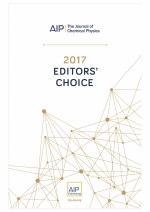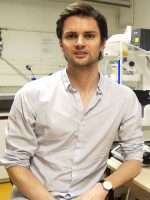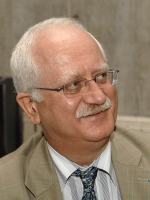A European Research Council (ERC) Consolidator Grant has been awarded to Arnaud
Gautier, Maître de Conférences at the Department of Chemistry of ENS, for his project
FLUOSWITCH – Pushing the frontiers of biological imaging with genetically encoded
fluorescence switches.

English:
Our understanding of biological systems is intricately related to our ability to observe how
their inner constituents organize and interact. FLUOSWITCH is a multidisciplinary research
project aiming at pushing the frontiers of biological imaging. Combining concepts and
methods from Chemistry and Biology, FLUOSWITCH proposes to develop semi-synthetic
hybrid probes to interrogate quantitatively and comprehensively living systems at the
molecular, cellular and network levels. In the frame of this project, will be generated
molecular systems enabling (i) to push multiplexed imaging to visualize a large number of
targets, (ii) to increase the resolution of live-cell imaging to have a full comprehension of
biological processes both in space and time, (iii) to image endogenous molecules in their
native environment; and (iv) to map circuits of interacting cells in an entire organism.
Français :
Notre compréhension des systèmes biologiques est intimement liée à notre capacité
d’observer comment leurs constituants internes s’organisent et interagissent. Le projet
multidisciplinaire FLUOSWITCH a pour objectif de repousser les limites de l’imagerie
biologique. En combinant des concepts et méthodes issus de la Chimie et de la Biologie,
FLUOSWITCH propose de développer des sondes hybrides semi-synthétiques permettant
d’interroger les systèmes vivants de manière quantitative à de multiples échelles, moléculaire,
cellulaire et systémique. Dans le cadre de se projet, seront générés des systèmes moléculaires
permettant : (i) de repousser les limites de l’imagerie multiplexée pour observer un grand
nombre de cibles, (ii) d’augmenter la résolution spatiotemporelle de l’imagerie cellulaire pour
avoir une meilleure compréhension des processus biologiques, (iii) d’imager les molécules
endogènes dans leur environnement naturel, et (iv) de cartographier des circuits de cellules
actives dans un organisme entier.






















